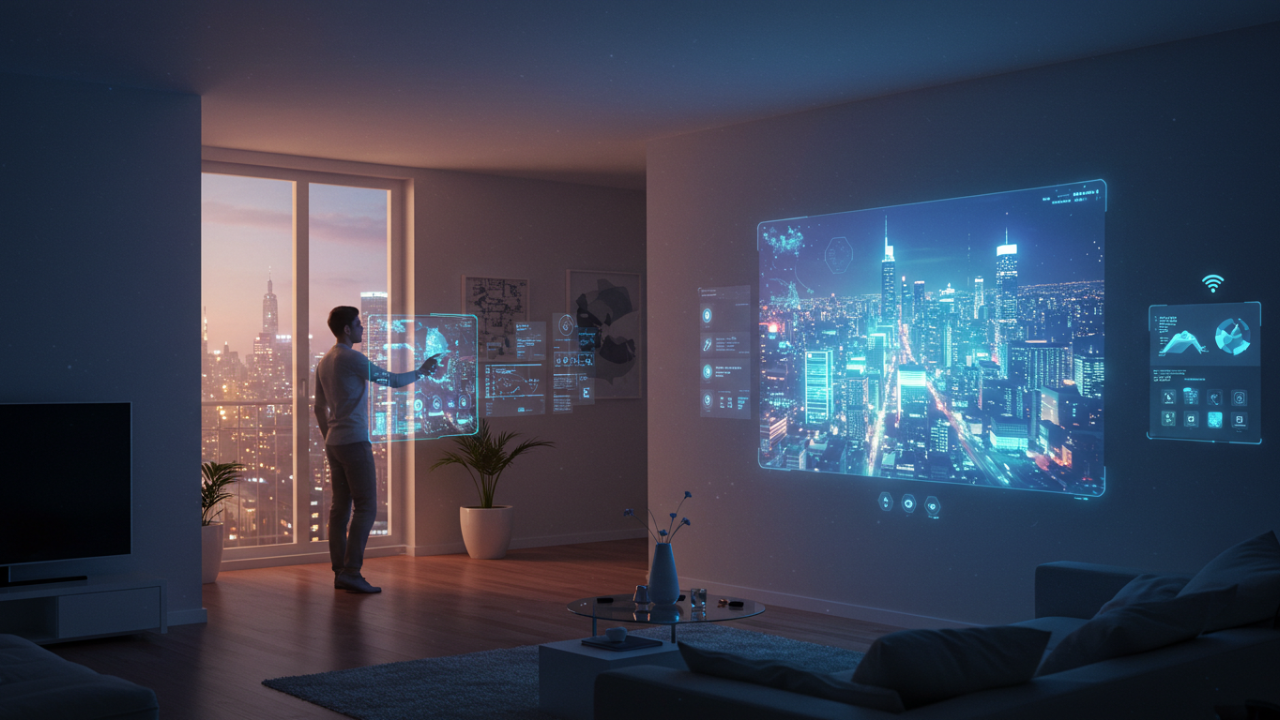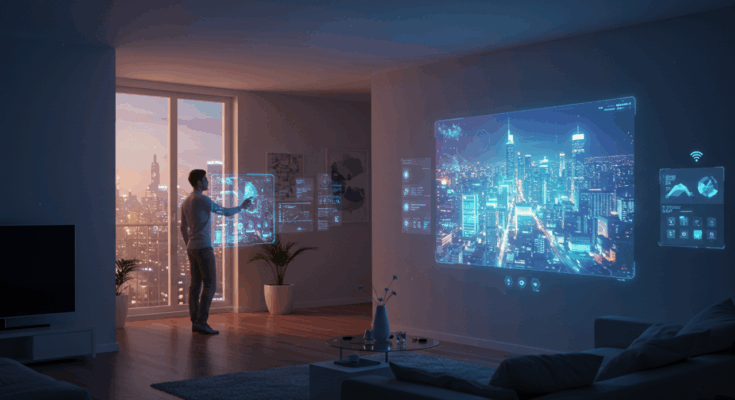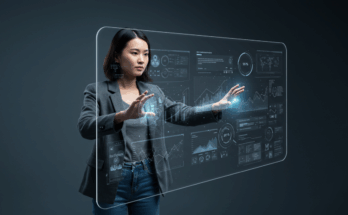Connected living is no longer a sci-fi dream—it’s the evolving reality of how technology integrates into our homes, workplaces, and communities. From smart cities to hyper-personalized devices, the future of connected living promises seamless, efficient, and sustainable ways to navigate daily life. This article explores emerging trends, practical applications, and actionable steps to prepare for a hyper-connected world, offering insights into how these changes will shape our routines and relationships.
The Foundation of Connected Living
Connected living refers to the integration of internet-enabled devices, AI, and data systems to create environments that anticipate and respond to our needs. The Internet of Things (IoT), 5G networks, and AI are the backbone of this shift, enabling devices to communicate in real time. By 2030, analysts predict over 50 billion IoT devices will be active globally, each contributing to smarter, more responsive ecosystems.

IoT: The Invisible Network
The IoT connects everything from your fridge to your car, creating a web of data that optimizes daily tasks. For example, a smart refrigerator can track inventory, suggest recipes based on what’s inside, and even order groceries when supplies run low. This connectivity reduces waste and saves time, with studies showing smart kitchens can cut food waste by up to 20%.
To adopt IoT at home:
-
Invest in scalable systems: Choose devices that integrate with platforms like Apple HomeKit or Zigbee for future-proofing.
-
Focus on essentials: Start with high-impact devices like smart thermostats or security cameras.
-
Monitor data usage: Ensure your home network can handle increased IoT traffic with a robust router.
5G and Beyond: Speeding Up Connectivity
5G’s ultra-low latency and high bandwidth are unlocking new possibilities for connected living. From enabling real-time health monitoring to supporting autonomous vehicles, 5G ensures devices communicate instantly. By 2027, 5G is expected to cover 75% of the global population, making lag-free connectivity a cornerstone of daily life.
To leverage 5G:
-
Upgrade your plan: Check with your provider for 5G availability and compatible plans.
-
Optimize device placement: Place routers centrally to maximize signal strength.
-
Stay secure: Use VPNs on 5G networks to protect data, especially in public spaces.
Smart Homes: The Heart of Connected Living
The smart home is the epicenter of connected living, evolving from basic automation to fully integrated ecosystems that adapt to your lifestyle.
Predictive Automation
Future smart homes will use AI to predict your needs. Imagine a home that adjusts lighting, temperature, and even music based on your mood, detected through wearable sensors or voice patterns. Companies are already piloting AI systems that learn from your routines, reducing energy use by up to 25% compared to traditional homes.
To prepare for predictive automation:
-
Experiment with AI hubs: Devices like Amazon Echo or Google Nest can serve as central controllers.
-
Enable learning features: Allow devices to track patterns for personalized automation.
-
Prioritize interoperability: Ensure new devices work with your existing ecosystem.
Sustainable Living
Connected homes are also driving sustainability. Smart energy systems monitor usage in real time, optimizing appliances to reduce carbon footprints. For instance, solar-powered smart homes can redistribute excess energy to the grid, potentially earning credits on utility bills.
To make your home more sustainable:
-
Install smart meters: Track energy consumption to identify savings opportunities.
-
Use eco-modes: Many smart appliances have energy-saving settings—enable them.
-
Explore solar options: Pair solar panels with smart inverters for efficient energy storage.
Connected Workspaces: Redefining Productivity
The workplace is undergoing a connectivity revolution, blending physical and digital environments to enhance collaboration and efficiency.
Hybrid Work Ecosystems
Connected workspaces use IoT and AI to create flexible environments. Smart desks adjust height based on your posture, while sensors optimize lighting and air quality for focus. Virtual reality (VR) meeting rooms, like those on Meta’s Horizon Workrooms, simulate in-person collaboration, with 60% of companies planning to adopt VR for remote work by 2028, per industry forecasts.
To thrive in connected workspaces:
-
Adopt collaboration tools: Use platforms like Microsoft Teams or Zoom with VR integrations.
-
Personalize your setup: Invest in ergonomic smart furniture for comfort.
-
Upskill for VR: Familiarize yourself with virtual meeting platforms to stay competitive.
AI-Driven Productivity
AI is streamlining workflows by automating repetitive tasks and offering real-time insights. For example, AI-powered project management tools like Asana or Monday.com can predict project delays and suggest resource allocation, improving efficiency by 15-20%, according to 2025 productivity studies.
To integrate AI at work:
-
Automate routine tasks: Set up AI to handle scheduling or data entry.
-
Use analytics dashboards: Leverage AI insights to prioritize high-impact tasks.
-
Stay adaptable: Regularly update AI settings to reflect changing work demands.
Smart Cities: Community-Scale Connectivity
Connected living extends beyond homes and offices to entire cities. Smart cities use IoT, AI, and big data to optimize urban systems, from traffic to waste management.
Intelligent Infrastructure
Smart cities deploy sensors to manage resources efficiently. For example, smart traffic lights reduce congestion by adjusting signals based on real-time traffic data, cutting commute times by up to 15% in pilot programs. Waste management systems use sensors to optimize pickup schedules, reducing fuel use.
To engage with smart city initiatives:
-
Use city apps: Download apps like Citymapper for real-time transit updates.
-
Provide feedback: Participate in local government surveys to shape smart city projects.
-
Advocate for equity: Ensure smart city tech benefits all residents, not just affluent areas.
Community Connectivity
Smart cities foster community through connected platforms. Neighborhood apps like Nextdoor integrate with city systems to share alerts, organize events, or report issues. These platforms strengthen social bonds, with studies showing a 10% increase in civic engagement in smart city pilot areas.
To connect with your community:
-
Join local platforms: Sign up for apps that link residents and local services.
-
Participate in forums: Engage in discussions to build neighborhood networks.
-
Support inclusivity: Advocate for multilingual and accessible tech solutions.
Ethical and Social Considerations
As connected living expands, ethical challenges like privacy, equity, and digital overload must be addressed to ensure technology serves everyone.
Privacy and Security
With billions of devices collecting data, privacy is paramount. In 2025, cyberattacks on IoT devices rose by 30%, highlighting the need for robust security. Encryption, secure protocols, and user awareness are critical to protecting personal data.
To enhance privacy:
-
Use strong passwords: Create unique passwords for each device or app.
-
Enable encryption: Choose devices with end-to-end encryption for data transfers.
-
Monitor permissions: Regularly review which apps access your data.
Bridging the Digital Divide
Connected living must be inclusive. In 2025, 2.6 billion people remain offline, per UNESCO, limiting access to smart tech. Governments and companies are investing in affordable connectivity, but individuals can also advocate for equitable access.
To promote digital equity:
-
Support local initiatives: Back programs providing tech access to underserved communities.
-
Share knowledge: Teach others how to use connected devices safely.
-
Choose ethical brands: Support companies prioritizing accessibility and affordability.
Preparing for the Future
The future of connected living is exciting but requires proactive engagement. Staying informed, experimenting with new tools, and advocating for ethical tech will help you thrive in this connected era.
To get ready:
-
Stay updated: Follow tech trends on platforms like X or tech blogs.
-
Test emerging tech: Try new devices or apps to understand their potential.
-
Balance connectivity: Set boundaries to avoid digital overload while embracing innovation.
Connected living is about more than technology—it’s about creating a world where systems work together to enhance our lives. By understanding and shaping these changes, we can build a future that’s not just connected, but truly cohesive.
FAQ
What is connected living, and how does it affect me?
Connected living involves using internet-enabled devices and AI to create responsive, efficient environments. It affects you through smarter homes, workplaces, and cities that save time, energy, and resources.
How can I make my home smarter without spending too much?
Start with affordable IoT devices like smart plugs ($10-$20) or bulbs. Choose devices compatible with major platforms like Google Home, and gradually expand your setup.
Is 5G necessary for connected living?
While not essential, 5G enhances connected living with faster, more reliable connectivity. It’s critical for applications like autonomous vehicles or real-time health monitoring.
How do I protect my privacy in a connected world?
Use strong passwords, enable two-factor authentication, and choose devices with encryption. Regularly update firmware and review app permissions to minimize data risks.
What can I do to ensure connected tech is inclusive?
Support initiatives providing tech access to underserved groups, advocate for affordable devices, and choose brands prioritizing accessibility in their designs.



